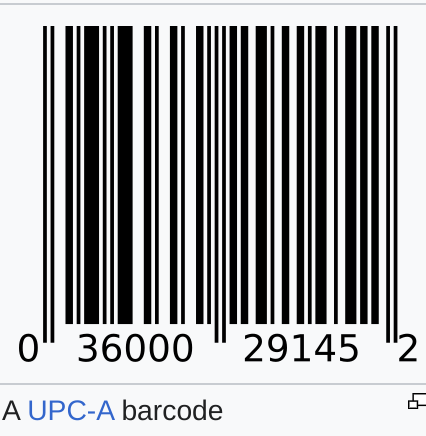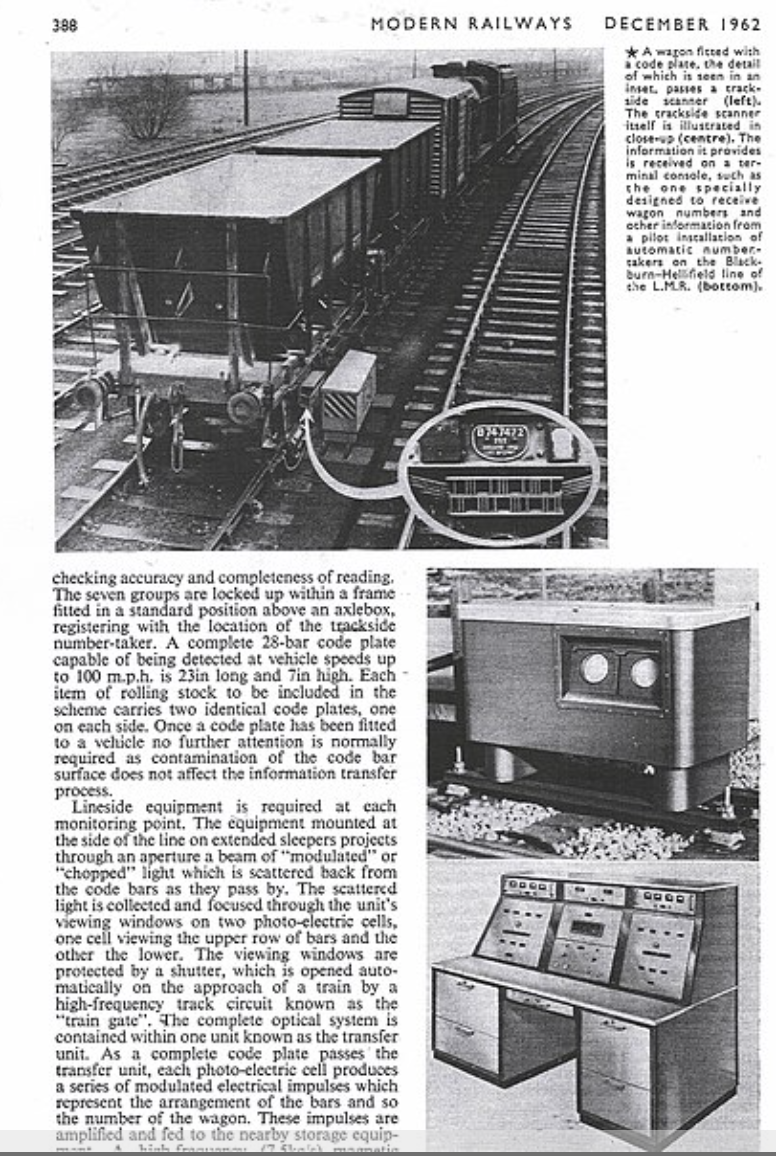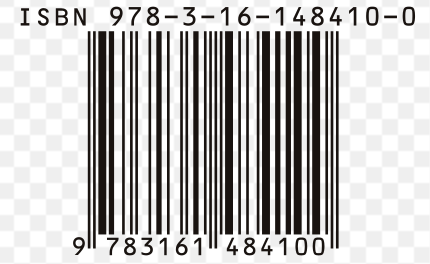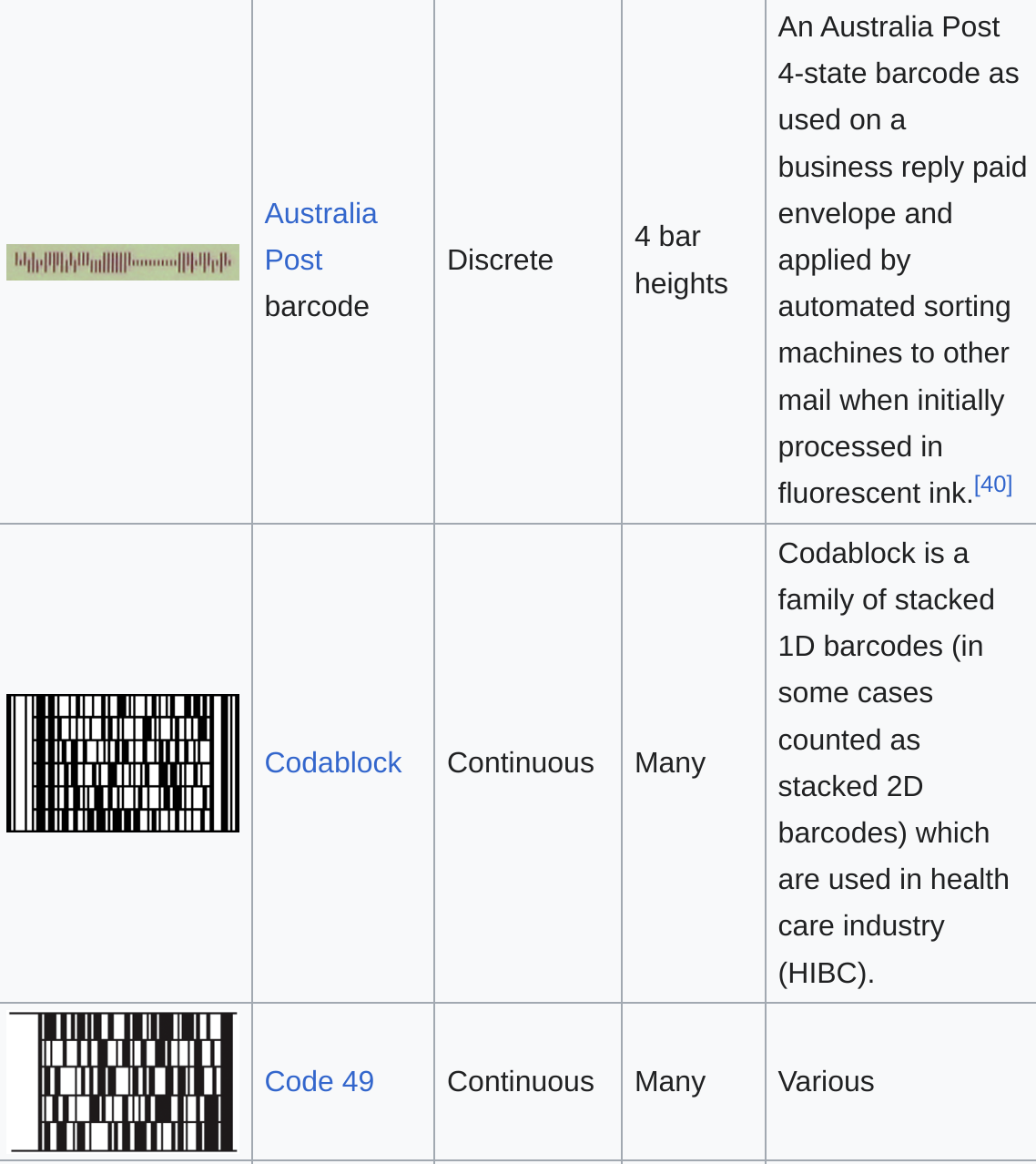What The Tech?! Barcodes
Barcodes played a much bigger role in the world than most realise.
If you aren’t a medium member, you can read with no paywall via substack
When dealing with technology, we’ll typically see something that is a complex device or system. Something that visibly looks quite advanced, and fits with the vision in our head of what advanced technology can or should look like. But sometimes, technology doesn’t look like that at all. It might be small, or simplistic in design, but sometimes, the impact of this technology can be lost in the overall simplicity of the design.
In today’s article, we’ll be focusing on something that looks just like that. Simply ink on a piece of adhesive paper, this piece of technology provided a logistical revolution and changed the way we shopped forever. It also laid the foundations for today's QR code. You got it, it’s the humble barcode. Let’s take a look at it!
First Concepts
We’ve talked much about the impact of the second world war on logistical chains and that’s relevant to today's article as well. With the first research around the concept of barcode coming in the wake of WW2, you might be surprised to know that the evolution of this didn’t come as a result of military logistics. In fact, it was the ever-common Grocery Store that provided this push. Looking for new ways to manage inventory, speed up the time required for checkout and methods to implement orders, the new barcode system offered much to the productivity-focused grocer.
To fully understand this though, we should look back at the general attitudes seen at the time, and one of the biggest factors impacting this was the average attitude in the first post-war years. While it’s fair to say that the war was incredibly damaging to most countries, the signing of armistice agreements led to a new hope for peace and mutual growth.
While these attitudes would eventually shift, leading to the Korean and then Vietnam wars, for now, the world was focused on consumer society. And what a society it was, as the growth of capitalism and a surge of manufactured growth, led many to believe that an era of extended peace would occur with subsequent development and production of many civilian industries.
So with this in mind, research was carried out at Drexel University in Philadelphia, where students Bernard Silver and Norman Woodland were working on a revolutionary new way of tracking and processing goods through the entire logistical chain. While the idea would take some time to refine and manage, by the time 1952 rolled around the new product was ready and patents were subsequently filed in an attempt to protect its design. The first gen barcode had arrived!
Refinement & Design
While it’s easy to think of a barcode in the way we might use them in a grocery store, the fact is that technology provided a massive shift in the way we deal with and manage logistics. In fact, the technology grew so rapidly that it was used at many stages of the inventory management process. While individual items were coded (like groceries), we also saw heavy use in the transportation system as well.
In fact, this was such an important part of the process that within a decade of the first patents being filed, British Railways developed a system that could read its barcode-fitted rail stock with 100% accuracy at speeds of around 100mph (160km/h). Not a bad effort considering the technology of the time! This meant that entire freight cars full of inventory were able to be tracked in near real-time across the entire country.
Using metal-generated barcodes fitted to the rolling stock itself, this durable system differed slightly from the barcodes in use in today's world. Using a concept of long and short dashes similar to Morse code, while the system offered great promise in practice it was phased out pretty early as more refined options came into play.
It’s about here though that we should point out that like many technologies, barcodes came in “generations”. While the first generation was simplistic in design and effectively one-dimensional, the next generation focused on 2d designs and a greater readability. So, in the early days, we also had circular barcodes and other designs that were intended to leverage this readability in the real world.
Peak Years
While logistics did their things, the grocers continued to do theirs too. And, because of this, it’s the barcode application within that field that was eventually responsible for calling the barcode a commercial success. With grocers focusing on accuracy and reliability, they were able to move the technology into a usable product that saw more viable commercial applications due to its reliability.
Because of this, we saw the barcode explode with a myriad of real-world uses in a vast array of industries. Post offices used them with auto reading systems to provide automated mail sorting, yielding huge efficiency dividends and streamlining the concept of “priority post”
Hospitals also use barcodes to track patients, digitize records and manage inventories of drugs and other assets.
While aviation was another industry that leveraged the technology on a large scale, using barcodes on boarding passes for people, and with luggage to track bags, freight and other important goods. For the budget, pay-as-you-go airlines, barcodes also helped manage food and drink onboard, providing a fast effective way for airlines to provide paid catering services to their customers.
Over time, these barcodes became both more complex and more expensive as well. While the cheapest barcodes were still available, companies were conducting their own research and using the barcodes to store various amounts of data which was then able to be read automatically. Eventually, this research and wide-scale usage would lead to a system that was as refined as it was reliable.
Later on, we’d also see barcodes paired with the new RFID technology to provide tracking services that could be automatically read at a distance without the need for expensive, optical-based systems to do the same job. Despite their expense, these systems were light years ahead of the first, 1d optical-based systems that we started with.
Into the Future.
While it’s easy to read this article and think that this technology has reached its peak and is now dying, the fact is that nothing could be further from the truth. In fact, the refinements to the barcode would eventually lead to the more modern systems that are used today, like QR Codes.
These QR codes would eventually be able to contain a fair amount of data and, when paired with reliable readability they become a great way to modernize the barcode and bring it into the modern era.
We saw this at length during the COVID-19 pandemic. Many restaurants and businesses, wanting to avoid having items that would be rehandled and need cleaning, turned to the QR code to digitize their menu and ordering systems. While this would prove to be a controversial step for some people, one thing it did show was the ability for the barcode to be quickly adopted at scale. A net positive, considering the circumstances at the time.
One thing that might surprise you though, is the usage of the barcode and subsequent to that, the QR code for malicious purposes. When dealing with counterfeit goods, scammers will often use a genuine barcode that links back to the real deal.
However, the real damage would often come from the world of cybersecurity. The barcode's unique data storage ability gave malicious actors the ability to store websites or malicious code within the barcode. When scanned, the code would take the user to the bad actor's page, offering a very real chance of a compromise. While it’s a bit more understood in today's world, when they first evolved they were a very real security risk.
Despite these limitations, due to it’s wide-scale usage, the humble barcode will continue to play its leading role in our connected world for quite some time to come.
Medium has recently made some algorithm changes to improve the discoverability of articles like this one. These changes are designed to ensure that high-quality content reaches a wider audience, and your engagement plays a crucial role in making that happen.
If you found this article insightful, informative, or entertaining, we kindly encourage you to show your support. Clapping for this article not only lets the author know that their work is appreciated but also helps boost its visibility to others who might benefit from it.
🌟 Enjoyed this article? Support our work and join the community! 🌟
💙 Support me on Ko-fi: Investigator515
📢 Join our OSINT Telegram channel for exclusive updates or
📢 Follow our crypto Telegram for the latest giveaways
🐦 Follow us on Twitter and
🟦 We’re now on Bluesky!
🔗 Articles we think you’ll like:
- What The Tech?! Rocket Engines
- OSINT Investigators Guide to Self Care & Resilience
✉️ Want more content like this? Sign up for email updates































